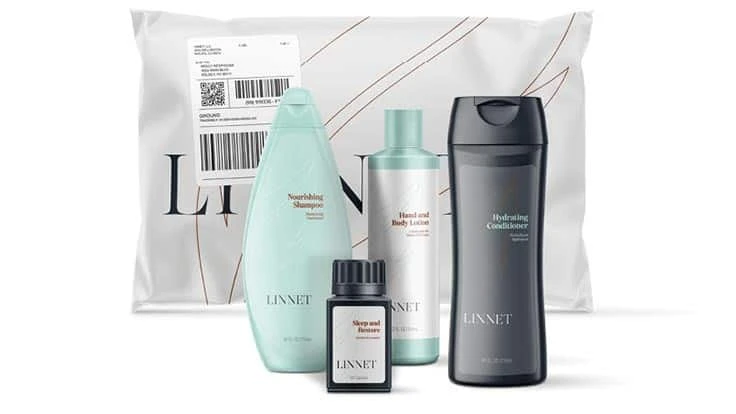
Photo courtesy of Avery Dennison
%EF%B8%8F_(002)_fmt.png)
Designing for recyclability is becoming a more prominent element of product research and development as the public focus on sustainability and environmental responsibility intensifies. This is especially true for packaging. Sometimes, it’s not the design of the containers used for product packaging that gets scrutinized and reworked but rather what is on the containers: labels.
Last fall, the Washington-based Association of Plastic Recyclers (APR) recognized nine companies that created innovative labels and completed rigorous testing on the products to ensure they met the standards in the APR Design Guide for Plastics Recyclability. Last year, the volume of companies requesting a review far exceeded previous years, and a record number of innovations received the APR Critical Guidance Recognition. That trend is predicted to continue.
“I don’t see it slowing down going forward, to be honest,” says APR CEO and President Steve Alexander. “I anticipate it continuing to grow exponentially for the foreseeable future.”
The APR is on track to rack up at least 50 reviews by year’s end, Alexander says. He cites several factors for the increase, such as better awareness of the APR Critical Guidance Recognition, greater understanding of the importance of this testing and increasing numbers of corporate sustainability commitments. The APR already has begun devoting more staff resources to the program.

Labeling innovations
Highlighting label innovations is important because “we find all the time that it’s not generally recognized that labels are one of the problems” with recycling, Alexander says.
But proper label liberation and segregation are critical to successful plastic recycling and to maintaining high-quality recycled material.
The APR’s Critical Guidance essentially sets the industry standards to ensure new packaging products meet recycling guidelines and do not contaminate the recycling stream.
“For a PET container, 80 percent of the problem with recycling that container can be eliminated if you use the proper label,” Alexander says. “Our tests are developed over time in consultation with industry and scientific review to determine if a material or innovation is in fact compatible with the current recycling stream.”
Packaging and label manufacturers are heeding the message.
“If you look at the APR’s guidance, labels are a concern unless they are designed to enable recycling,” says Melissa David, product manager at FLEXcon, which is a Spencer, Massachusetts-based producer of coated and laminated films and adhesives. “We want to make sure our pressure-sensitive label media is not a contaminant for the recycling stream and enables the recycling process to go smoothly,” she adds.
The company received recognition for its pressure-sensitive film labels for polyethylene terephthalate (PET) packaging. The labels are paired with a new adhesive that is designed to release from PET during a traditional wash process. The PET flakes then sink and the label pieces float, so they can be easily separated rather than acting as a contaminant.
“We could put a product out there that doesn’t enable recyclability, but that’s not helping any of the companies downstream. If we enable it, we help grow the availability of material that will go back into containers,” David says. “Then it’s benefiting all the processes downstream.”
CCL Label, Toronto, also received recognition for a new PET bottle label, but that label is a shrink sleeve that does not require adhesive. The low-density polyolefin material—a polypropylene and polyethylene mix—easily detaches from PET during a wash cycle and can be recycled after separation.

“This is something pretty new,” says Marika Knorr, head of sustainability and communication at CCL Label. “Polyolefin materials for shrink have existed in the past, but they were never as advanced, so they never really made it in the market.”
With the new CCL shrink label, “the wash water stays very clean because … the inks remain on the material, so you also don’t have a huge contamination of the wash basin,” Knorr, who is based in Germany, says. “We see our labels and sleeves as a very important part of making a packaging product recyclable. It may seem like a small part … and some people don’t think of it as a part of packaging itself, but it actually is. Choosing the right label can make a huge difference in recycling,” she adds.
CCL enlists a third party to carry out its testing protocol, and results are submitted to the APR. The standard testing protocol includes all the steps that a normal PET bottle would go through when it’s recycled, from washing to separation to extruding a new PET product, to determine if the recycled material maintained its original properties, Knorr says.
Conscious of materials usage
Other considerations to be conscious of when designing for recyclability with labels are the amount of material being used, adhesive coat weight and which inks or other materials are added to the label, says Riley Nay, Avery Dennison senior product manager – films. Nay, who works in the Cleveland area for the Glendale, California-based company, says ensuring all those aspects associated with labels do not compromise recyclability “is really what we’d call a system solution.” He adds, “All the different value-add components—whether that be us or customers’ printing, or the brands putting something on a bottle—can affect the recycling. All the parts need to work together.”
Avery Dennison received Critical Guidance Recognition for a high-density polyethylene (HDPE) packaging label innovation. The company worked with the APR last year to better understand the HDPE recycling stream, what recyclers currently are doing, where pain points exist and whether the company’s labels help or hinder package material recycling. Testing determined the product does enable recycling, and the APR recognition “was a big win for us last year,” Nay says.
The global push for greater sustainability has prompted the company to revisit and expand existing products—for example, its flagship sustainable solution for clean flake. “We continue to innovate on it because, from a trend perspective, we see the need for this growing even more over the next five-to-10-year horizon,” he says.
Encouraging advocacy
Despite sustainability advances in the label and packaging space, more can be done, Nay says, and key elements are creating greater recycling stream standardization and increasing recycling infrastructure. The APR and its members play a large role in achieving that by advocating for federal recycling legislation, he says.
That advocacy and expanding the Critical Guidance Recognition program are “how the APR works, and [they are] a great example of how we create change,” Curt Cozart, president of APR contractor Common Sense Solutions Inc., Montclair, New Jersey, says. “We are not R&D folks. We don’t go out there and develop a new polymer. We elevate the awareness of an issue to the people who can innovate and create a solution.”
Getting marketplace acceptance for these solutions can be difficult, Alexander says. The APR hopes more companies will follow suit if they see others innovating and gaining traction with customers. The APR aims to acknowledge the companies designing for recyclability—especially those doing due diligence and undergoing the testing protocol.
“These types of innovations go on every day in the plastics recycling space. It’s a very technologically innovative activity,” Alexander says. “We certainly hope people don’t overlook this.”

Explore the June 2021 Issue
Check out more from this issue and find your next story to read.
Latest from Recycling Today
- USTR announces phased measures designed to address China’s shipbuilding dominance
- APR, RecyClass release partnership progress report
- Clearpoint Recycling, Enviroo sign PET supply contract
- Invista expanding ISCC Plus certification program
- Redwood partnership targets recycling of medium-format batteries
- Enfinite forms Hazardous & Specialty Waste Management Council
- Combined DRS, EPR legislation introduced in Rhode Island
- Eureka Recycling starts up newly upgraded MRF





